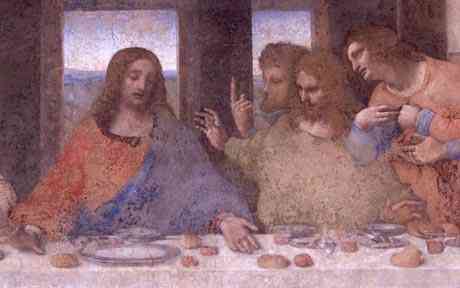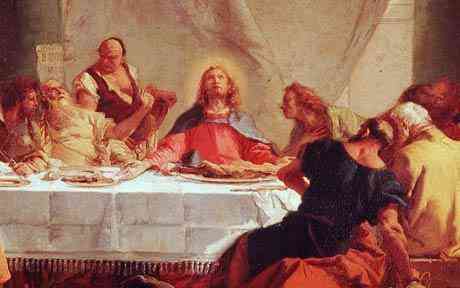By Richard Alleyne, Science Correspondent 1208PM GMT twenty-three March 2010
Previous of Images Next Details of the investigate will be published in the Apr issue of the International Journal of Obesity Photo IAN JONES
Details of the investigate will be published in the Apr issue of the International Journal of Obesity Photo IAN JONES  The Last Supper by Tiepolo c1745-7 Photo ALAMY
The Last Supper by Tiepolo c1745-7 Photo ALAMY The food portions decorated in paintings of the biblical eventuality have grown incomparable over the last 1,000 years in an e.g. of art imitating life.
Since the beginning well known drawings done in 1000AD to now, they found the main courses, bread and plates put prior to Jesus and his disciples have progressively grown by up to two-thirds.
Ancient Chinese white tea might quarrel plumpness Failed plumpness consternation drug Leptin regenerated by new investigate Fatty diet during conceiving physically creates young kids some-more inspired for food Encouraging young kids to finish their dishes could fuel plumpness predicament Chlorella the superfood that helps quarrel diseaseThe Cornell University group in New York complicated 52 of the majority important paintings of the Biblical stage over the millennium and scrutinised the distance of the feast.
Using a computer, they compared the distance of the food to the distance of the heads in the depictions of Jesus Christ and his disciples at their last image prior to his death.
The distance of the main image grew 69 per cent, the image by 66 per cent and the bread by twenty-three per cent, in between the years 1000 and 2000.
Supersizing is deliberate a complicated phenomenon, but "what we see not prolonged ago might be only a some-more conspicuous piece of a unequivocally prolonged trend," pronounced Professor Brian Wansink, a food poise scientist at Cornell University in New York.
"The last thousand years have witnessed thespian increases in the production, availability, safety, contentment and affordability of food.
"The last thousand years have witnessed thespian increases in the production, availability, safety, contentment and affordability of food.
"We think that as art imitates life, these changes have been reflected in paintings of history"s majority important dinner."
He says the anticipating suggests that the materialisation of apportionment bigger portions on incomparable plates has occurred progressively over the millennium.
The Bible says the Last Supper took place on a Passover dusk but gives small item on specific dishes on top of bread and wine.
There"s zero else mentioned, Prof Wansink said. "They don"t contend there"s a ripened offspring crater or carrot cake, though alternative dishes such as fish, eel, lamb and even pig have appeared in paintings by the years," he added.
For the study, he used paintings featured in the book "Last Supper," published in 2000 by Phaidon Press. They embody important portrayals of the meal, by Duccio, El Greco, Leonardo da Vinci, Lucas Cranach the Elder and Rubens
His group used computer-aided pattern record to indicate and work out the relations measurements of equipment in the paintings, in any case of their orientation.
Based on the arrogance that the breadth of an normal fritter of bread from the time should be twice that of the normal disciple"s head, the researchers plotted the distance of the Passover dusk dishes.
The sharpest increases were seen in paintings finished after 1500 and up to 1900AD.
Professor Craig Wansink, co-author and a eremite studies expert, pronounced the changes in apportionment sizes is probably a thoughtfulness of enlightenment rather than theology.
"There is no eremite reason because the dishes got bigger," he said. "It might be that dishes unequivocally did grow, or that people only became some-more meddlesome in food."
But Martin Binks, a behavioural health clergyman and a expert at Duke University Medical Centre, pronounced the investigate is "not unequivocally suggestive science".
"We have genuine hold up examples of the enlarge in apportionment distance - all you have to do is see at what"s being sole at fast-food restaurants," he added.
The investigate is published in the International Journal of Obesity,
No comments:
Post a Comment